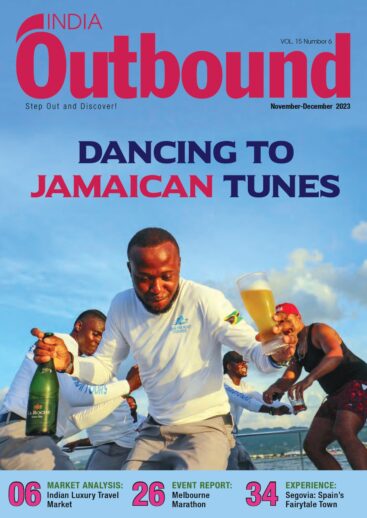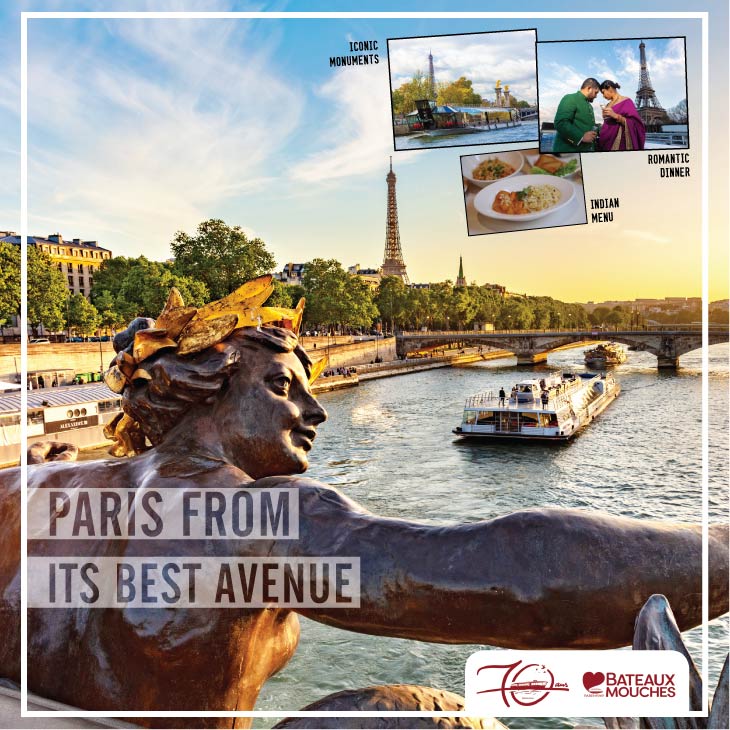From any major city it is quite easy to reach a natural reserve in South Africa. Beginning with the Sabi Sabi private game reserve – situated alongside the Kruger National Park – to the Hluhluwe near Durban, let’s meet the big five ( Rhinos, Elephants, Lions, Leopards and Buffaloes)
It is five in the morning and already the warm, red sun plunges its rays in the savannah at the Kruger National Park, the biggest animal reserve in South Africa. We had reached the night before, still fighting the jet lag of the rather long and circuitous travel from India. Yet, I was not feeling too tired as I had jumped on the plane nearly 20 hours ago, there was one thing that kept me going. I was going to see a lion in the wild for the first time. Of course, I was also curious to see other animals, especially the giraffe and the zebra, as I had heard that wild animals are more easy to spot in Africa than in India.
Luxury Amidst Wilderness
The savannah is more or less plain and dry, with very few tall trees and that allows visitors to spot the animals from far away. We were in Sabi Sabi, the oldest private reserve in the country, and lucky us ! We just got upgraded to the best suites in the resort: the Sabi Sabi Earth Lodge. The concept is interesting. All the cottages, which come with a private jacuzzi and an amazing bathroom overlooking the savannah, have been built under the earth in the shape of a cave. A naturalistic approach that copes perfectly with the top luxury services provided in this private resort. ” Many celebrities come here very often, they usually privatise the entire place and really enjoy being cut from everyone and still be able to enjoy luxury in the middle of nowhere ! ” , said the resort manager. A cricket fan, he explained that ” many Indian celebrities come as well including one famous cricketer who recently came with his famous girlfriend ” , even if he did not mention the name, all the Indians in the room immediately knew who it was! ” We do not have a big celebrity culture here in South Africa as compared to India where a film star or a sport star is a living god! So, people feel at ease and happy to actually be treated as a normal person and roam around freely ” he added. The reserve also posses its own airstrip for the private jets of the rich and the famous.
The Sabi Sabi private reserve is situated in the north eastern part of the country, juxtaposed with the Kruger National Park. Spread over 65,000 hectares, it has an amazing biodiversity thanks to the rivers Sabi and Sand which flow there. In the reserve, one can find over 200 species of wild animals including elephants, lions, rhinoceros, leopards, zebras and giraffes.
The good thing about private reserves like Sabi Sabi is that the safaris are not limited to a particular time and you can actually drive when you want and for as long as you want. The guides can also take you on walking safaris to be closer to the animals, but we won’t try that for our first encounter with the African fauna…
An Elephantine Surprise
The Sabi Sabi Earth Lodge has an amazing contemporary decor and a beautiful terrace overlooking a small pond and the open savannah. As I sat down to enjoy the scenery, a large elephant approached the pond carefully. Standing about 30 m away from me, he was watching me and surprised by his sudden appearance, I jumped to grab my camera to freeze the moment. ” It’s a wild elephant, do not make any rapid movement and stay far ” , said a guide adding that ” He comes here often with his family ” . But where was the family ? After making sure that the environment was safe, the male elephant called his troupe with a trumpet. Few minutes later, to my delight, an army of 7 elephants including 3 cute calves appeared on the scene. A perfect start to our safari experience.
At around 4 pm, it was time for our afternoon safari. Under a hot sun, we jumped onto the open jeep. Everyone wanted to see the lions, so our driver took us to see the beasts first. Just behind our resort, we spot a few hippos playing in a pond. Hippos are semi–aquatic and gregarious animals. A male can weigh upto 2,000 kg and a female 1,700 kg. They might be bulky but they can run at a speed of about 30 kilometers per hour, faster than the humans! A pure vegetarian, an adult Hippo bull can eat up to 130 kg of grass per day. While playing, they make loud noises and open their big mouths which show their large canines that can inflict serious wounds. It is often said that of all animals, hippos are the greatest killers of humans in Africa, especially in the areas close to the river.
We could watch them playing for hours but as the sun set we were eager to see more, much more.
As we drove in the savanah, the temperatures began to fall rapidly. We enjoyed the tricks played bv the sky, hidden behind the trees. The African Savannah is a thorn bush savannah, which has many different kinds of plants such as Acacia, Candelabra, Jackalberry, Whistling Thorn, Bermuda grass, Baobabs, and the Elephant grass. The savannah is also home to hundreds of birds species including some amazing ones that are almost as big as a human.
The Animal Cycle
The wildlife here follows its natural course and hence the environment is prosperous. A vibrant tropical forest provides enough food to the impalas and other deers, which are in turn food for the predators such as lions, leopards and wild dogs.
As we moved forward, the guide got a call from another jeep, a leopard has been spotted not far from us. Leopards are one of the most difficult animals to spot as they usually are very volatile, solitary, secretive and nocturnal. But there she was ! Lying in the grass, a young female leopard was taking a nap. She had just killed a baby impala, whose remains she had hung by a tree behind her. Despite the excitement flowing from tourists in two jeeps and innumerable cameras flashing, the leopard was hardly bothered. She closed her eyes and opened them from time to time to watch us unblinkingly in the eyes. The total count of these magnificent felines in South Africa remains a mystery of sorts.
Under the Convention on International Trade in Endangered Species of Wild Fauna and Flora (CITES), South Africa can allocate 150 permits each year for the trophy hunting of leopards, mainly for the tourists. But the mismanagement of trophy hunting and the illegal trade in leopard fur being main threats to South Africa’s population of the big cat, the government decided for the first time in 2016 to impose a year-long ban on hunting leopards.
Unlike India, where killing a wild animal can lead to severe consequences including a huge fine and jail, South Africa actually earns substantial revenues from selling permits to wealthy foreigners willing to pay thousands of dollars to hunt one of the “big five” (lion, leopard, elephant, rhino or buffalo). According to the environment ministry, hunting generates over 1.2 billion SAR (6 billion INR) for South Africa every year.
With a warm wind blowing on our face, we continued to explore the savannah. The red sky embraced the trees and drew a beautiful canvas. As I raised my eyes, I could see billions of stars forming the Milky Way. A vision that I could not even dream of while living in a large city.
We did not spot any lions, but as we returned to the resort we encountered a hyena. I was almost asleep in the jeep when the guide suddenly stopped the car and directed the lights toward the animal. Looking at the rather grotesque face of the animal, I did not recognise it immediately. As surprised as we were, the hyena immediately ran into the forest. A member of the dog family, a hyena weighs around 60 kg and stands at about 80 cm at the shoulder. Hyenas live in clans of between 10 and 40 animals, led by a dominant female. ” It’s a great catch, hyenas are not easy to spot! ” , said the guide, who himself was excited by the vision.
From Kruger to Hluhluwe Umfolozi
Early morning, before the sunrise, we left Sabi Sabi to take an early flight to Durban. In just an hour we reached the city where Mahatma Gandhi had lived when he was a young advocate practising in South Africa. An important Indian diaspora has notably settled down here. Hungry for more safaris, we decided to head straight towards the Hluhluwe Reserve.
Here, the landscapes are totally different from dry lands of Kruger park. With rolling green hills and open savannah, the reserve is incredibly scenic and rich in its animal collection as over 1,500 white rhinos and 360 black rhinos, besides countless buffaloes, elephants, lions, leopards, blue wildebeest, zebras, giraffes, water-bucks, nyalas, kudus, bushbucks, warthogs, cheetahs, hyenas, impalas and 300 species of birds have been recorded in Hluhluwe.
The area is particularly known for the conservation of black and white rhinos. And as we entered the park, we spotted a few of them sleeping far away on the hills’ slopes. Indeed, rhinos usually sleep standing up or lying down and can sleep up to 8 hours a day at intervals.
Everywhere, the beautiful giraffes often accompanied by their zebra friends greeted us. Like ballet dancers, the giraffes ran in the savannah and played with the trees. A giraffe stands head and shoulders higher than any other animal on the Earth. It can measure 5.5 metres from hoof to head. Giraffes love Acacias and they can eat up to 34 kg of leaves in a day.
As we got back in the jeep, it had begun to rain, but we were more than motivated to meet the lions. And our prayers did not go unanswered. Just a few minutes from our hilltop camp we came across a young lion sitting near its prey – a big buffalo – that he apparently had killed in the morning. His mane had not yet fully developed and at least from a distance, he appeared to be lean, but his roar was enough to immobilise us and remove all doubts about his ferociousness. I just sat there, imagining his brutal force, having killed such a large and powerful bovine of 750 kg, simply by using his claws and jaws. Not a mean task!
As he remained hidden behind his kill, we spent a good hour trying to get glimpses of his majesty. His large face was particularly expressive and impressive. And when we returned to our camp, we were all thrilled. In just two days of safari, we had managed to meet all the big 5 and yes, I have no doubts that the lion is definitely the king of the African jungle.
———-
Who are the big 5?
How did these five animals – the lion, elephant, buffalo, rhinoceros and leopard – come to be called the Big Five? It was originally a hunting term used by the so- called ‘great white hunters’ in the hunting heyday of the 19th and early 20th centuries, when professional hunters bagged as many trophies as possible in as short a time as possible.
Considered a rite of passage for seasoned travellers, everybody from American presidents to European royalty and heads of state came to Africa to shoot a large, dangerous animal. The Big Five quickly became known as the most dangerous animals to hunt on foot, and the name stuck – although now ‘shooting’ is mainly done through a camera lens.
Where to stay
Sabi Sabi Lodges http://www.sabisabi.com With a history spanning over 35 years, the lodge has earned a reputation of a “luxury home in the bush” Hluhluwe Hilltop Camp http://www.hilltopcamp. co.za The most popular of all the camps in Hluhluwe Imfolozi game reserve.
How to reach

Safari in South Africa
Sabi Sabi Reserve
. Daily scheduled flights from O.R. Tambo (Johannesburg) International Airport directly to the Sabi Sabi Airstrip
. SA Airlink operates daily scheduled flights between Johannesburg and Skukuza; and between Cape Town and Skukuza
Hluhluwe
. 3-4hours drive from Durban

























